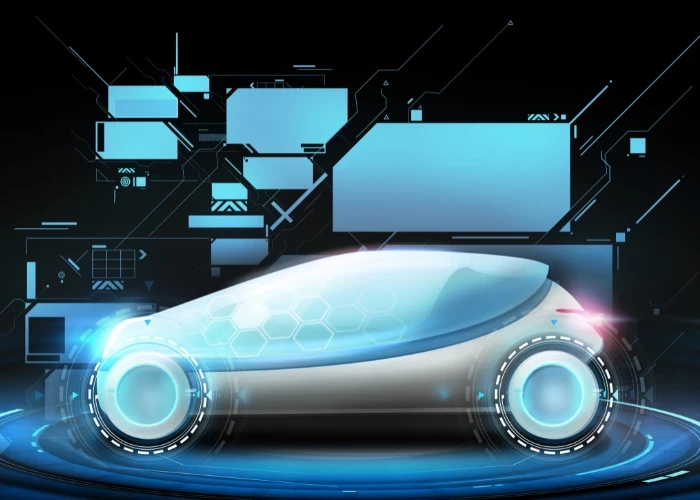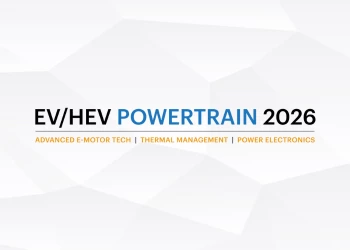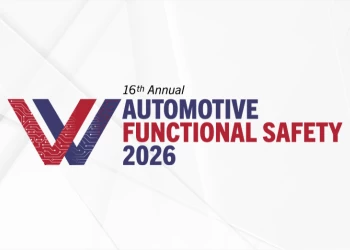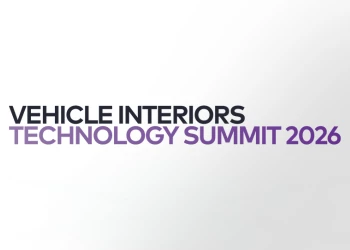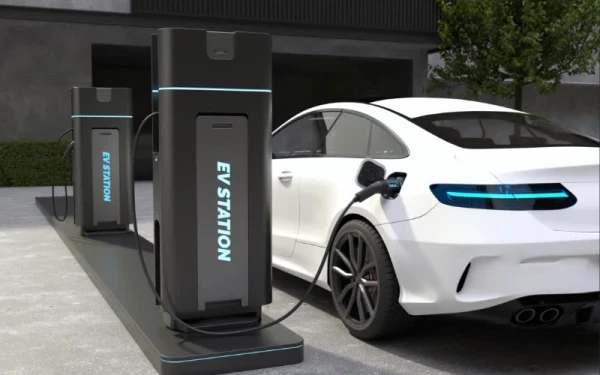48 Volt Electrification: The next step to achieving 2020 emissions
Add bookmarkEmphasizing the importance of electrification speakers at the 2nd 48 Volt Power Supply System Conference in 2014 estimated that 70% of new cars in Europe in 2020 will require some form of electrification to meet the European Union’s goal of 95 g/km of carbon-dioxide emissions. However current start-stop systems already push 12V technology to its limits, and when used in "mild hybrids", 10 to 15 kW will be required: At these levels current draw would be 1000A and require cables of 10 to 15 mm. This, obviously, is not feasible.
Fortunately 48 Volt technology is well developed and poised to supplement 12V platforms. According to Taylor Hansen, Vice-President of Controlled Power Technologies (CPT), a British technology company and a strong proponent of the 48V system, global carmakers will have to embrace 48 volts as the most cost-effective way of meeting stringent CO2 emissions regulations being introduced in 2020. "We see rapid growth in 48V mild hybridisation and it’s easy to see why," says Hansen. "Compared with 200V to 600V full hybrid and battery electric vehicles, the low voltage approach avoids the need for high cost safety features and large battery packs.
Furthermore, the universal application of this technology to the more than 100 million vehicles per annum forecast to be produced from 2020 onwards, 98% of them with gasoline and diesel engines, would in the short term reduce annual CO2 emissions by 100 million tonnes globally per annum (50g/km reduction x 20,000km average annual mileage per vehicle x 100 million vehicles). And the technology is relatively easy to homologate for production, which buys the industry more time to develop lower cost pure electric and hydrogen fuel-cell vehicles".
The shift from the current NEDC test to the more aggressive WLTP test, with further 25 per cent reductions anticipated in 2025 and 2030, will most likely hasten this shift. According CPT, a consensus of global forecasts suggests that 48V micro hybrids (Stop Start Vehicles, SSV’s) will soon come to dominate the market, which will require an extensive switch to 48 Volt electrification.
[inlinead]
One of the issues for the industry to confront in moving away from the NEDC test is that the WLTP typically halves the measurement of CO2 reduction gained from first generation stop-start systems, which characteristically reduce CO2 emissions on the NEDC by 5 per cent: This reduces to 2.5 per cent when measuring the same vehicle on the WLTP.
At the 48V Hybrid Electric Vehicle conference in Dýsseldorf in November 2014, keynote speaker Florian Kýhnlenz, responsible for series development of low voltage energy systems at Volkswagen AG, presented the current status of the electric and electronic architecture requirements of dual voltage 12/ 48 volt power supplies in vehicles. With many manufacturers already adopting the proposed LV148 standard, the early 48V systems will be auxiliary systems linked to the 12V supply through a DC/DC converter - meaning a system duplication which will result in a vehicle on-cost.
OEM’s are weighing up this on-cost in the light of existing and future penalties for not achieving legislated emissions: From 2012, manufacturers have had to pay an excess emissions premium for each car registered of €5 for the first g/km, €15 for the second g/km, €25 for the third g/km, and €95 for each subsequent g/km. Beginning 2019, the penalty will be a flat €95 from the first gram which constitutes a significant incentive to fund the additional hardware required by the tandem 48V architecture.
Audi recently demonstrated prototypes of an existing A6 TDI and RS5 TDI equipped with 12V/48V technology. In these designs a DC/DC converter integrates the 12-volt and 48V electrical systems. A 48V compact lithium-ion battery operates in conjunction with a newly developed, efficiency-optimized alternator achieving an energy recovery output of ten kilowatts, far more than is possible with a 12V system. The system achieves a saving of up to ten grams of CO2 per kilometer, equivalent to around 0.4 liters per 100 kilometers in fuel consumption.
In a discussion on the business opportunity electrification presents, Research Company Pike recently predicted; "Global revenue from the sales of stop-start batteries will grow at a compound annual growth rate of 30%, from $827 million in 2011 to $8.9 billion in 2020." The Pike report mirrors similar conclusions from Lux Research in their report: "Micro-hybrids: On the Road to Hybrid Vehicle Dominance," and comparable research conducted by Navigant Research.
On the Road to Hybrid Vehicle Dominance
According to European Advanced Lead-Acid Battery Consortium (EALABC) project coordinator Allan Cooper; "Although there’s been extensive development of Li-Ion batteries for hybrid and Electric Vehicles, advanced low-cost lead-carbon battery technology is attracting the interest of carmakers for use in 48V micro and mild hybrid powertrains." What's more, these batteries are made of materials that can be fully recycled into new batteries, enabling OEMs to further reduce the impact of emissions, thereby providing a cost effective solution for 48V hybrids that require a battery with a high rate partial state-of-charge (HRPSoC) capability.
The state-of-charge (SoC) of current lead-carbon batteries is typically maintained at between 30 and 50 per cent, with the voltage/ amperage not exceeding 54V at 150A when recovering energy. This energy recovery is typically recovered from vehicle deceleration and exhaust gas energy. These batteries also maintain more than 38V at 180A when starting the engine or supplementing torque for acceleration. Under these conditions advanced lead-carbon batteries are capable of operating in the 30 to 70 per cent SoC range at 12.5kW.
At its "Analysts’ Day", battery market leader Johnson Controls noted that although Li-ion performance was better than that of traditional lead-acid batteries for start-stop applications, from the point of view of cycle life, charge acceptance, and usable energy, Li-ion cannot match cold-cranking capability and cost. As with conventional starter-motor batteries, advanced lead-carbon batteries can be charged at minus 30°C. This is an important advantage in vehicles operating in the snow-belt areas of the northern United States and Europe. And unlike lithium-ion they require no active cooling and no expensive battery management system.
"With further development of 48V powertrain technology, we anticipate being able to reduce CO2 emissions by as much as 30% compared with today’s baseline," says Cooper. "Moreover, the low additional cost of €50-60 for each 1% of CO2 reduction achieved is as little as one-tenth the premium of high voltage (200-400V) hybrids and pure battery electric vehicles – which presently are deemed unaffordable by the average motorist."
New Battery Tech designed to reduce or eliminate the need for costly thermal management
Adopting a different approach, A123 Systems, LLC, a wholly owned subsidiary of Wanxiang Group have refined the Nanophosphate EXT (EXtreme Temperature) lithium-ion battery technology originally developed at the Massachusetts Institute of Technology. These batteries are capable of operating at extreme temperatures without requiring thermal management, thereby significantly reducing or even eliminating the need for heating or cooling systems, while maintaining long cycle life at extreme high temperatures and delivering high power at extreme low temperatures.
The Nanophosphate EXT extends the core attributes of A123’s proprietary lithium ion phosphate battery technology (high power, long cycle life, increased usable energy and excellent safety) over a wider temperature range, enabling customers to deploy more advanced solutions that increase performance in applications that frequently experience battery cycling at extreme temperatures. The improvements are as a result of relatively subtle changes, not a revolution in materials. The Nano-based lithium phosphate used for the cathode material is not fundamentally different from the previous generation device.
Because Nanophosphate EXT is designed to reduce or eliminate the need for costly thermal management, it is expected to deliver these performance advantages while also improving reliability, minimizing complexity and reducing total cost of ownership (TCO) over the life of the battery system.
Jeff Kessen, A123’s director of global marketing for the Automotive Solutions group, says that the EXT capabilities could conceivably enable a switch from liquid cooling to air cooling, thereby taking a lot of components out of the vehicle—depending on duty cycle and the size of the battery in comparison to the power of the motor.
According to testing performed at the Ohio State University’s Center for Automotive Research (CAR) cells built with A123’s Nanophosphate EXT are expected to be capable of retaining more than 90% of initial capacity after 2,000 full charge-discharge cycles at 45 C due to the very low rate of aging. CAR has also evaluated the cold temperature performance of Nanophosphate EXT, which A123 expects will deliver a 20% increase in power at temperatures as low as -30 °C: Characteristics that are ideally suited to micro-hybrid applications.

